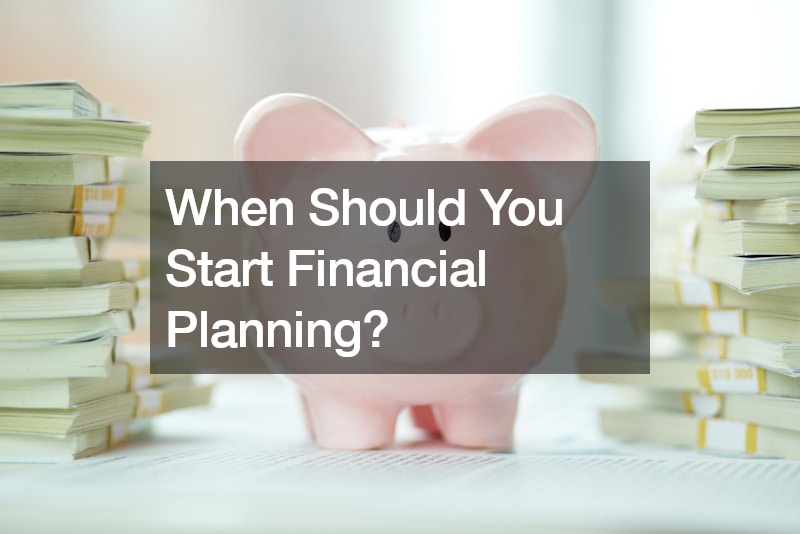
In today’s fast-paced consumer-driven world, it’s easy to think that spending money is at odds with saving it. However, the concept of safe spending demonstrates that these two financial goals can work hand in hand. Safe spending is the strategic use of money towards purchases that extend long-term value, thus increasing savings over time. This long-form article will delve into how safe spending can be applied in various aspects of domestic and personal finance, offering insights and examples on how to make the most out of the money you spend today to build wealth tomorrow. The following sections will explore choices such as investing in durable home items, maintaining and repairing existing assets, and making lifestyle changes that contribute to financial stability.
A Mower That Pays for Itself
When it comes to maintaining a home, investing in a high-quality lawn mower can save you money in the long run. A durable lawn mower can last for years and spare you the cost of hiring lawn care services. The key to safe spending here is selecting a model known for reliability and low maintenance requirements.
By choosing a lawn mower that offers efficient energy consumption, you’re also saving on fuel costs. Many newer models come with features that ensure longer runtimes and less frequent fuel needs. Over the life of the machine, these savings can significantly add up, making your initial investment worthwhile.
Consider a model with a good warranty as well, which will protect your initial investment. This allows you to have peace of mind knowing any necessary repairs covered by the warranty won’t require additional spending. With the right approach, safe spending on a lawn mower not only boosts your home’s curb appeal but also contributes to bigger long-term savings.
Investing in a Roof That Lasts Decades
The roof is one of the most crucial components of any home, and investing in reliable roofing services can prove to be a wise decision. Spending safely on quality roofing means selecting materials that provide durability and energy efficiency. Although it might seem like a significant upfront expense, a good roof can last for decades, helping you avoid frequent replacements or repairs.
Quality roofing can also contribute to enhanced insulation, lowering your energy bills by keeping your home temperature consistent throughout the year. When your heating and cooling systems don’t have to work as hard, you’re saving money on utilities. These savings might not be immediately noticeable, but over time they can add a significant amount to your savings.
Choosing a reputable roofing service with a strong track record is crucial. A professional roofing contractor will not only ensure proper installation but will also be available for any future maintenance needs, safeguarding your initial investment. Safe spending in roofing reflects how strategic choices can lead to substantial financial benefits.
Blinds That Cut Costs and Boost Comfort
Window treatments such as window blinds play a significant role in both the aesthetics and functionality of a home. Investing in high-quality blinds can be a form of safe spending that eventually results in savings. By controlling the amount of light and heat that enter your home, blinds can influence your energy bills.
Quality window blinds offer better control over room temperature, reducing the need for additional cooling or heating. This moderation in energy use not only contributes to a reduced carbon footprint but also reflects savings in monthly utility bills. Over the life of the product, these cumulative savings will reflect a notable reduction in expenditure.
While opting for window blinds, consider materials and designs that complement your home’s interior and provide maximum efficiency. Investing in a range of features like automated controls can make them more convenient to use and further enhance their benefits. Choosing wisely ensures that your initial outlay results in a product that offers value and longevity, both key aspects of safe spending.
Siding That Saves: Beauty, Efficiency, and Long-Term Value
Updating your home’s appearance with new siding can seem purely cosmetic, but when done thoughtfully, it is another example of safe spending. Engaging a reputable siding contractor can ensure that you choose the best materials for durability and energy efficiency. High-quality siding offers better protection against the elements, which means lower maintenance and repair costs down the line.
Siding that provides proper insulation can also enhance your home’s energy efficiency, leading to reduced energy bills. This attribute often leads to long-term savings, offsetting the initial investment cost over the years. It represents safe spending where energy conservation leads to financial conservation.
When selecting a siding contractor, look for experience and customer satisfaction to ensure high-quality installation. Properly installed siding increases curb appeal and raises property value, a long-term financial benefit if you decide to sell. By focusing on quality and longevity, adding new siding becomes an investment in both your comfort and financial future.
Ditch the Bottled Water: A Smarter, Cheaper Alternative
Switching to a water filtration system is a practical approach to safe spending, offering significant savings over time. The daily purchase of bottled water can quickly add up, costing you hundreds of dollars annually. A water filtration system is a one-time investment that provides a continuous supply of clean drinking water.
The environmental benefits are unquestionable as well. Reducing plastic waste aligns with broader efforts to protect the environment. This aspect of safe spending enhances your financial wellness while contributing to a greater cause.
By investing in a high-quality water filtration system, you’re not only saving money but also improving your home’s health standards. The peace of mind that comes with knowing your water is safe and pure is invaluable. The transition from bottled water to a filtration system reflects how a simple change in spending habits can lead to substantial savings.
Plumbing Check-Ups: Small Investment, Big Savings
Regular inspections by a plumbing contractor are a form of safe spending that can prevent costly emergencies later on. Small leaks or clogs, if left unchecked, can escalate into more significant problems requiring expensive repairs. By addressing these issues early, you’re saving money and avoiding future inconveniences.
An experienced plumbing contractor can also offer advice on improving your home’s water efficiency. Their insights can lead to further savings on your water bills. Investing in routine maintenance preserves your home’s infrastructure, ensuring its longevity and reliability.
The modest cost of regular inspections is a small price to pay compared to the potential cost of large-scale plumbing repairs. This safe spending approach means protecting your home and finances by preventing minor issues from turning into expensive catastrophes. It underscores the importance of maintenance as a proactive financial strategy.
Upgrade Your HVAC, Lower Your Bills
Fix It, Don’t Replace It: The Smart Way to Save
Dead Trees Can Cost You: Remove Them Before They Do
Scheduling tree removal services for dead or damaged trees may seem like an unnecessary expense, but it’s an example of safe spending that prevents future costs. Dead trees pose a risk to your property, particularly during storms or severe weather. Removing them proactively avoids potential damage to your home and high repair costs.
Engaging professional tree removal services ensures that the job is done safely and efficiently. These services have the expertise and equipment to handle the removal properly, protecting your home and landscape. Safe spending here involves prioritizing safety that leads to financial security.
Aesthetic improvements are another benefit, as removing dead trees enhances your landscape’s appearance, increasing your home’s curb appeal and potentially its market value. By taking action before problems arise, you’re investing in the safety and long-term value of your property, a central tenet of safe spending.
Buying a Truck: A Practical Investment for Work and Life
Consideration of a vehicle purchase often revolves around necessity over luxury. When the need arises for a versatile vehicle, visiting a truck dealer to explore your options might be a form of safe spending. Trucks offer practical benefits, such as hauling capacity and durability, making them more cost-effective for various lifestyle and work needs.
Choosing the right truck with favorable mileage and low maintenance costs can lead to significant savings on fuel and upkeep over time. It stands as proof that spending more initially for a durable vehicle can result in long-term financial benefits. Partnering with a reputable truck dealer ensures you receive a reliable product, backed by warranties and support.
Financing options and dealer incentives can make trucks an economical choice. Safe spending here means analyzing long-term needs versus initial costs, resulting in a decision that aligns with both financial intelligence and practical utility. Choosing the right vehicle thus becomes a strategic decision that complements your financial landscape.
The journey towards bigger savings through safe spending starts with informed choices and the willingness to invest in quality and longevity. Whether it’s through the purchase of durable home appliances, regular maintenance services, or lifestyle changes that lead to less waste, each decision contributes to your financial health. Safe spending is thinking ahead and recognizing that while upfront costs may be higher, the long-term savings and value far outweigh them.
Through smart investments in items that boost home efficiency or require fewer replacements, you can reframe your spending habits to generate meaningful savings. Furthermore, aligning these decisions with environmental consciousness amplifies their impact, making you not just financially prudent, but also eco-conscious. By embracing the principles of safe spending, you transform what is traditionally viewed as expenditure into an opportunity for investment and financial growth.
Ultimately, the key to successful financial planning lies in understanding that the initial cost is often just the starting point in the journey of spending safely. By focusing on long-term savings rather than short-term expenses, you ensure that your financial decisions enrich your life sustainably. In this way, safe spending serves as a pathway to increased savings and financial security, allowing you to achieve financial goals with assurance and responsibility.







